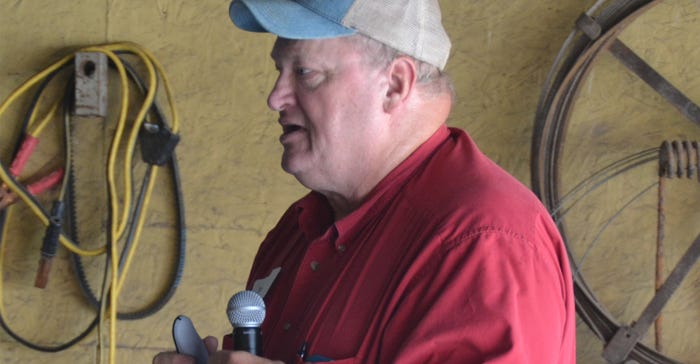June 22, 2017

For the past couple of years, “interseeding” has become a buzzword among innovative farmers. For years, farmers have been using cover crops to protect soil from erosion and take up excess nitrates in spring and fall. But until recently, most farmers have either waited until after the cash crop is harvested to drill cover crops, or they’ve seeded them with an airplane into standing crops in late summer or early fall.
Drilling cover crops after corn is harvested means the cover crop might not get seeded until late November, leaving almost no heat units left to get the plants started before winter. On the other hand, seeding cover crops with an airplane into standing crops in late summer or early fall also has drawbacks; it’s expensive, requires timely rain in the driest part of summer and can result in inaccurate cover crop seed placement.
Farmers fine-tune interseeding methods
Fortunately, researchers and farmers are making strides in this area, using interseeding to more efficiently cover their fields in between the production of cash crops. Interseeding means seeding cover crops into corn with some sort of high-clearance seeder when the corn is 6 to 8 inches tall (approximately V4 to V5 stage of development).
Two years ago, Jack Boyer of Reinbeck in east-central Iowa decided he’d give interseeding a try on his farm. In early June 2015, he planted a cereal rye cover crop into some of his corn at V4 stage with an air seeder that he’d mounted to an anhydrous bar. After one month, the rye was up and growing under the corn canopy. After two months, the rye was thin and brown, and by September, it was all dead.
Get cover crops off to earlier start
After that experiment, Boyer was determined to find out a way to successfully get cover crops off to an earlier start. He raises seed corn and wants to make sure those fields have as much biomass as possible growing in them after seed corn harvest.
“I’m interested in learning more about early seeding of cover crops in seed corn,” says Boyer. “And perhaps learning of some species of cover crop to plant in seed cornfields to help improve soil health and erosion control.”
Last year Boyer worked with Practical Farmers of Iowa to design an on-farm strip trial examining interseeding cover crops in seed corn production. In a study, Boyer compared two cover crop mixes planted June 8, when corn was 6 inches tall at V6 stage of development, to a control treatment that received no cover crops.
 FARMER EXPERIENCE: Jack Boyer of Reinbeck successfully interseeded a cover crop mix into his seed cornfield in June. It didn’t affect seed corn or yield, and it produced a successful stand of cover crop in the fall after corn harvest.
FARMER EXPERIENCE: Jack Boyer of Reinbeck successfully interseeded a cover crop mix into his seed cornfield in June. It didn’t affect seed corn or yield, and it produced a successful stand of cover crop in the fall after corn harvest.

One mix consisted of annual ryegrass, berseem clover, crimson clover, lentils, radish and turnips (six species); the other mix consisted of annual ryegrass, crimson clover, radish and rapeseed (four species). The design of the project was a randomized complete block, with all treatments replicated four times in strips that measured between 50 and 60 feet wide and ran the length of the field.
Species of cover can be established early
And this time, the covers survived. “In my search for cover crop species that can be established early in corn, I learned that in seed corn, most covers will survive due to the shorter plant height [than commercial corn], which permits more light to the covers,” he says.
After the first hard freeze on Oct. 12, Boyer clipped the aboveground biomass in the cover crop mixes and found no differences between the two in biomass amount, carbon concentration, nitrogen concentration or C:N ratio. But he did find that both of the cover crop mixes had produced between 2,500 and 3,000 pounds per acre of biomass. He had planned to sample the cover crops again in the spring, but none overwintered.
In addition, Boyer received yield numbers from the seed corn company. “It was interesting to have confirmed by the seed production company that there was no yield drag due to the interseeding of covers into the corn at the V4 to V6 stage [early June],” he says.
You can find more information about Boyer’s study by going to Practical Farmers of Iowa and searching for “interseeding seed corn.”
After learning a few lessons from this study, Boyer says he is excited to keep progressing. “I’ll continue to look for cover crop varieties that will overwinter when interseeded,” he says. “Next step will be to try cowpeas in commercial corn to evaluate the cover crop’s performance. I will also evaluate different corn hybrids that may permit more light to reach the cover crops.”
Ohde writes for PFI in Ames.
About the Author(s)
You May Also Like






